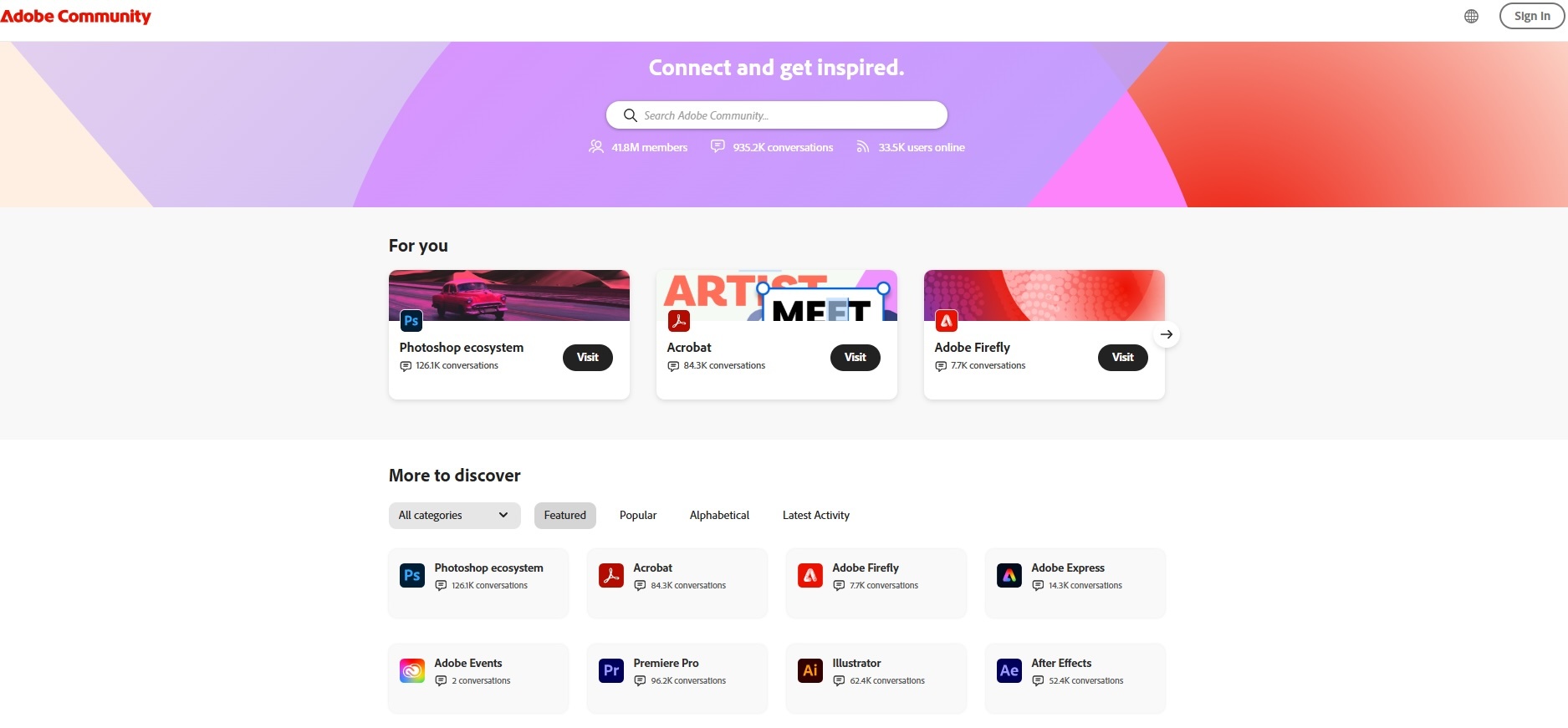 Logo
Logo
EXPERT INSIGHTS
Apr-22-2025
9 proven strategies to build brand loyalty with examples
Khoros Staff
In today’s hyper-competitive business landscape, building lasting brand loyalty is more crucial than ever. Consumers have endless options at their fingertips, so brands need to know how to keep customers coming back.
In this post, we’ll discuss the top ways to drive brand loyalty including insights from our survey of over 1,600 consumers.
What is brand loyalty?
Brand loyalty is the emotional and behavioral connection customers have with a brand that keeps them coming back, even when there are cheaper or more convenient alternatives. Loyal customers trust the brand, advocate for it, and consistently choose it over competitors. This relationship goes beyond satisfaction; it's rooted in shared values, positive experiences, and a strong connection to the brand.
Why is brand loyalty important?
Loyal customers spend more, stay longer, and are more likely to recommend your brand to others. In fact, retaining existing customers can be 5-7x more cost-effective than acquiring new ones. Yet brand loyalty remains fragile—according to our 2023 Brand Confidence survey of 1,620 adults, only 22% of consumers consider themselves loyal to a brand for life.
This means the majority are open to switching, given the right motivation. Brands should focus on delivering value and satisfaction to their current customers to strengthen loyalty and reduce churn. And by proving your brand is worth sticking with, you may also attract customers ready to leave your competitors behind.
What influences brand loyalty?
In our 2023 Brand Confidence survey, we also asked respondents about the top factors that influence their loyalty to brands.
Four out of five customers—a whopping 80%—say a great product will most heavily influence them to develop loyalty to a brand. Dependable discounts follow, with 53% of customers saying that will improve their brand loyalty. Customer rewards programs (39%) and the opportunity to provide customer feedback or the company taking action on that feedback (27%) are also strong drivers of brand loyalty.

Understanding what makes customers loyal to brands is a good first step toward improving brand loyalty, but driving results requires turning insights into action.
How to build brand loyalty
To help you improve brand loyalty, here are nine actionable tips and strategies to incorporate into your business.
1. Provide great products and services
Great products and services are the foundation of brand loyalty, as it's the reason customers buy from you in the first place and why they keep coming back. When your products consistently meet or exceed customer expectations, customers will stay satisfied with little reason to shop around for alternatives.
Regularly audit your offerings to ensure you’re on par with competitors and review customer feedback to find areas of improvement. You can also improve products and services by investing in development and quality control.
2. Offer dependable discounts
Make discounts a consistent and strategic part of your customer experience—not just a last-minute sales tactic. A good example of this is the boutique movie publisher The Criterion Collection, which consistently offers a 50% off flash sale twice a year and generates a ton of buzz from customers about these events.
Prior to each sale, customers speculate about what date it will happen on and what they plan to purchase during the event. After the sale, customers flock to social media to discuss what they purchased and why.


Regular discounts do more than drive temporary revenue surges; they can become noteworthy events that generate discussion among customers and promote loyalty. You can also provide customers with discounts based on their purchase history to tailor deals, or scale discounts with loyalty tiers to reward your top customers.
3. Create a customer reward program
A reward program provides customers with exclusive benefits such as discounts, birthday gifts, free shipping, access to events, and points that can be redeemed for products. Sephora’s Beauty Insider program is the gold standard for loyalty rewards, which features three tiers with benefits that scale:

Launched in 2007 as one of the first reward programs in the beauty industry, the program has helped the brand become an industry leader today with more than 34 million members that account for 80% of the company’s sales. It’s also a great way to encourage customers to buy directly from the brand instead of affiliate retailers that take a cut from each sale.
Create a reward program if your brand doesn’t have one already, and if you do, evaluate it to see if there are ways to make it more enticing for occasional customers who aren’t loyalists.
4. Give customers opportunities to provide feedback
Build loyalty by giving customers an opportunity to share their feedback about your brand and offerings. Use short surveys following purchases or after interactions with customer service representatives. If you have a brand community, you can also seek feedback through prompts or use social listening tools to see what customers are saying across popular social media platforms. More importantly, act on the feedback and let your customers know how their voices are shaping your products, services, or experiences.
5. Personalize customer experiences
Today’s customers expect brands to understand their preferences, anticipate their needs, and tailor the customer experience to each person. To this point, 77% of consumers say they’re more likely to choose, recommend, and pay more for a brand that provides a personalized customer experience.
Small actions like greeting customers by name at the start of interactions or in promotional emails go a long way in building brand loyalty. Even better, brands that use data like purchase history and browsing behavior can personalize offerings to promote the most relevant products and anticipate customer needs. Post-purchase, the top priority should be delivering exceptional after-sales service to ensure customers remain satisfied and loyal. If a customer contacts support for help, address their issue in a timely manner and store the interaction data for service agents to reference in the future.
6. Deliver exceptional customer service
Poor customer service can deter even the most loyal brand advocates, and 60% of customers have said they’ve stopped doing business with a company due to poor service. Fast, friendly, and effective customer service builds trust and loyalty because customers can feel confident about access to support should they need it. Create and execute a customer service strategy that accounts for touchpoints across the customer journey, and monitor your customer satisfaction score (CSAT) to track its effectiveness.
7. Leverage social proof
Positive reviews, testimonials, influencer endorsements, and user-generated content all reinforce trust and credibility. Seeing others love your brand helps new customers feel confident about their decision to choose you and drives brand loyalty. Zoom is a great example of using social proof to build trust and loyalty, as the company showcases a social proof banner on the homepage of their website featuring prominent businesses that use their product and an option to read about these stories.

On the customer stories page, the brand highlights successes and innovative ways organizations are using the Zoom platform.

Using social proof can promote sales and instill confidence and loyalty within existing customers.
8. Be consistent across touchpoints
From your website to your social media and customer support, consistency in tone, visuals, and values creates a seamless and trustworthy brand experience. A unified brand presence helps customers know what to expect from your brand so those who like the way you operate remain loyal. Create a style and messaging guide to ensure consistency across channels and promote brand loyalty.
9. Cultivate community spaces
Foster a sense of belonging by creating brand communities for customers to engage with each other and your brand. A strong community can turn casual buyers into brand loyalists who promote your brand because they feel part of something bigger. Adobe’s online community is a prime example, as it features an accessible interface to help new users connect with others and get support or explore products from the brand.

Build brand loyalty with Khoros
Brand loyalty isn't built by accident, it's earned through a deep understanding of what customers value and changes to reflect those values. By putting people at the center of your strategy, you can foster a connection and turn first-time customers into brand loyalists.
One of the most effective ways to foster that connection is by building a digital community where customers can engage with your brand and each other. Khoros Communities empower brands to create secure, scalable spaces for peer-to-peer support, content sharing, and customer engagement. If you're ready to turn loyalty into advocacy, explore how Khoros can help you build a thriving brand community that lasts.












